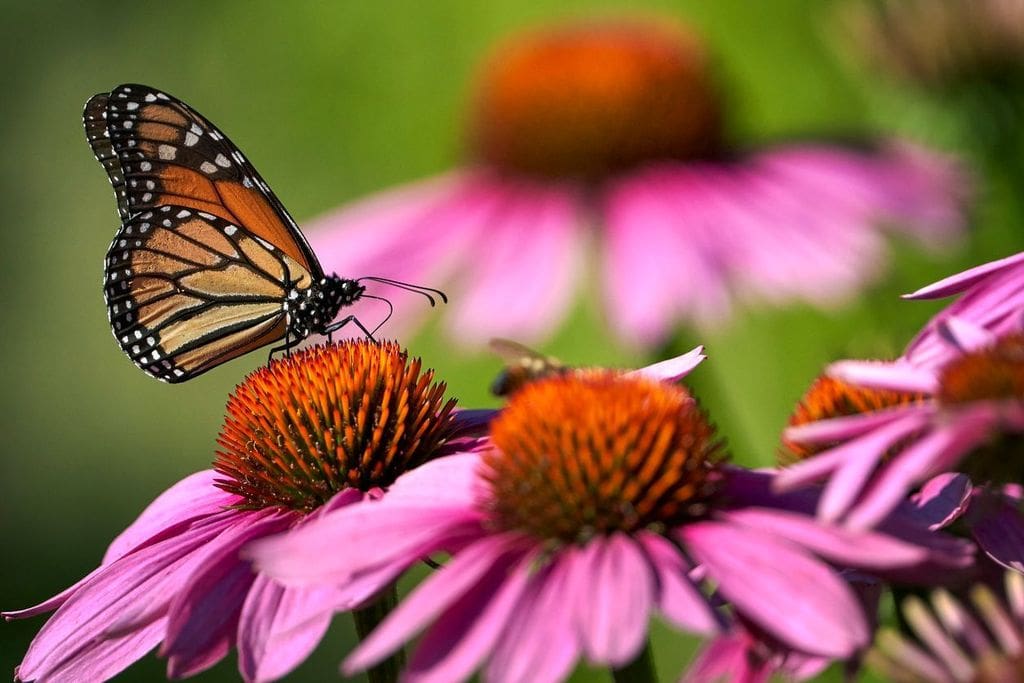Communing with nature is a great way to spend the evening after a long day of hard work and relax. The best gardens are those that are wildlife friendly! Here are a few tips to make your landscape a more welcoming environment. Birds of all species need various nesting sites. It’s good to have a variety of trees, shrubs and evergreens. Even an old dead tree can fit into your landscape to invite woodpeckers and nuthatches to nest. Butterflies need nectar sources, host sources (for the caterpillars) and shelter. And all living beings need water, a great way to attract more wildlife is to include a water source.
Here’s small list of plants to entice the birds, bees and butterflies!
Trees and shrubs for birds:
- Serviceberry (amelanchier)-the birds love to gobble up the berries in the spring!
- Hawthorn (crataegus)-great protective tree for nesting and produces berries for a food source.
- Colorado Spruce or Norway Spruce (picea)-A great protective nesting site for birds (as with most other evergreens).
- Red/Black Chokeberry (aronia)-another great food source for birds.
Butterfly garden plants:
- Yarrow (achillea)
- Columbine (aquilegia)
- False Indigo (baptisia)
- Butterfly Bush (buddleia)
- Caryopteris
- Tickseed (coreopsis)
- Delphinium
- Coneflowers (echinacea)
- Bee Balm (monarda)
- Penstemon
- Sedums
- Goldenrod (solidago)
A small pond or fountain makes a great open water source.



